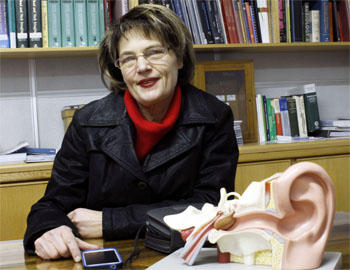"Studies indicate disability, poverty and inaccessibility to healthcare are intricately linked " - expert opinion by Dr Magteld Smith

Dr Magteld Smith |
Programmes worldwide attempt to improve the lives of people with disabilities, but recent studies indicated that disability and poverty, as well as disability and the inaccessibility of health care, continues to go hand in hand.
In South Africa, and even in developed countries, research shows that people with disabilities achieve lower levels of education with higher unemployment rates, live in extreme poverty and have low living standards.
“To have a disability can therefore become a huge financial burden on either the disabled person, the family or caregivers,” says Dr Magteld Smith from the Department of Otorhinolaryngology.
She devotes her research to the medical-social model of the global organisation, the International Classification of Functioning, Disabilities and Health, focusing on all areas of deafness.
Furthermore, Dr Smith says it is more difficult or more expensive for people with disabilities to obtain insurance, because of the risks associated with disability.
Dr Smith also emphasises the inaccessibility and even unavailability of medical services or health care for people with disabilities.
“Services such as psychiatry or social services are often not accessible. When such services are available, it is not affordable for most people with disabilities.”
Dr Smith uses the example of a person who was born deaf:
“Doctors have limited knowledge of the different types of hearing impairments or how to read and interpret an audiogram. Very little understanding also exists for the impact of deafness on the person’s daily life.”
Dr Smith, who is deaf herself, describes the emotional state of mind of people with disabilities as a daily process of adjustment and self-evaluation.